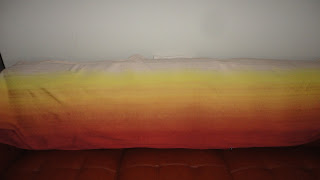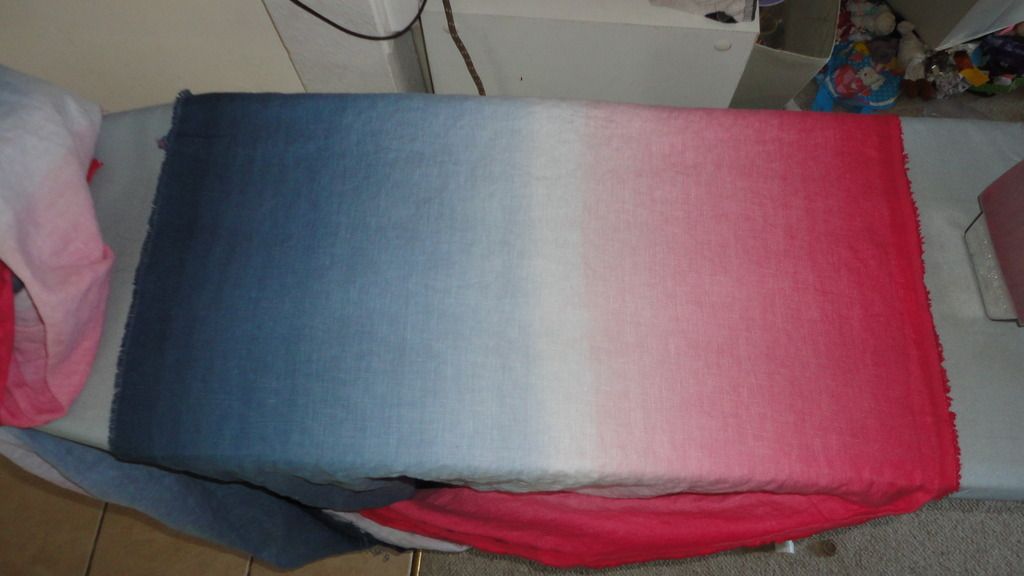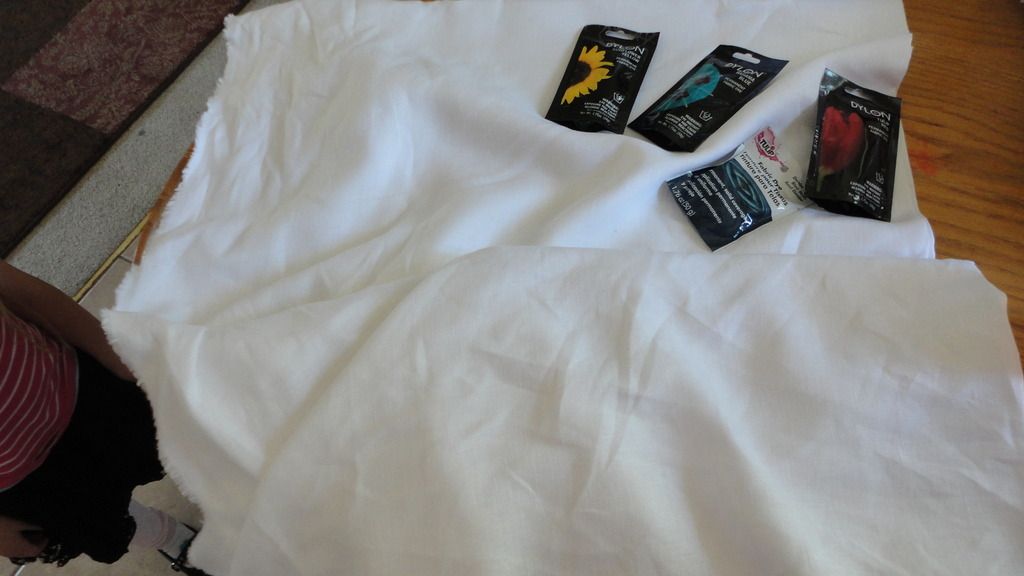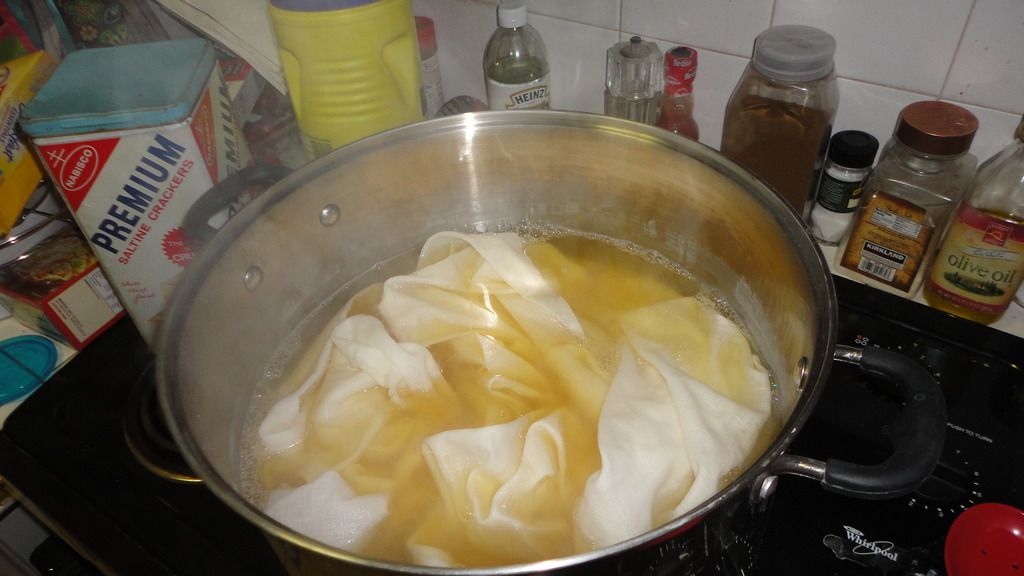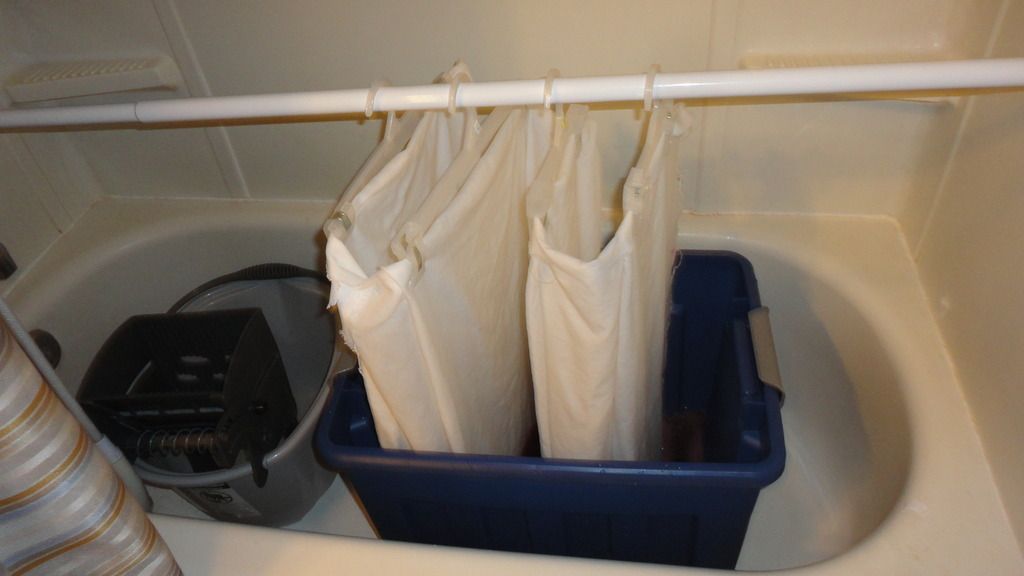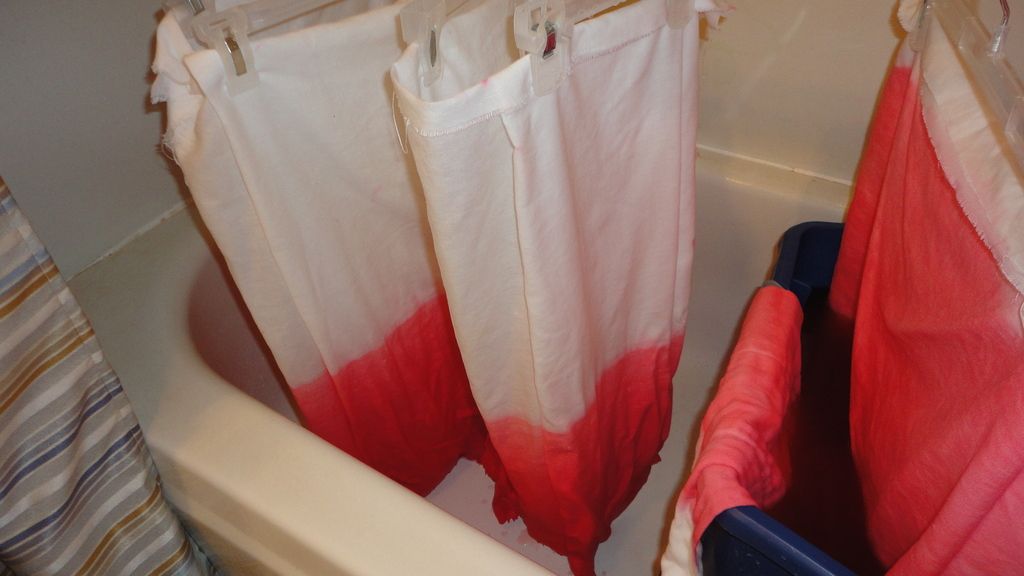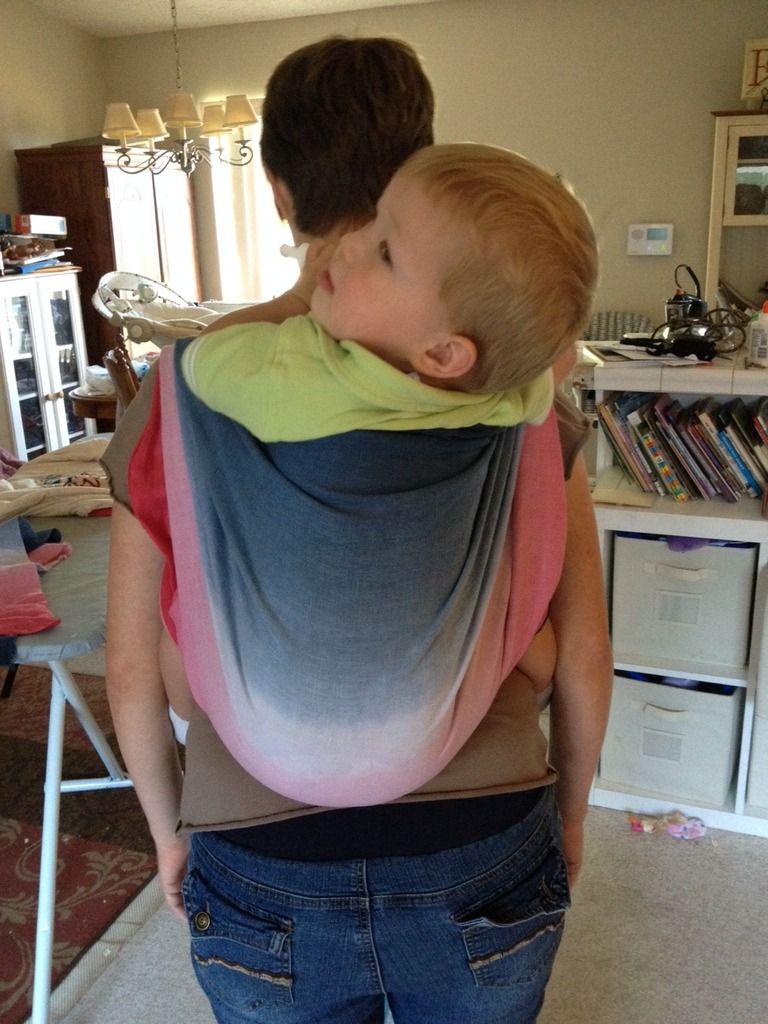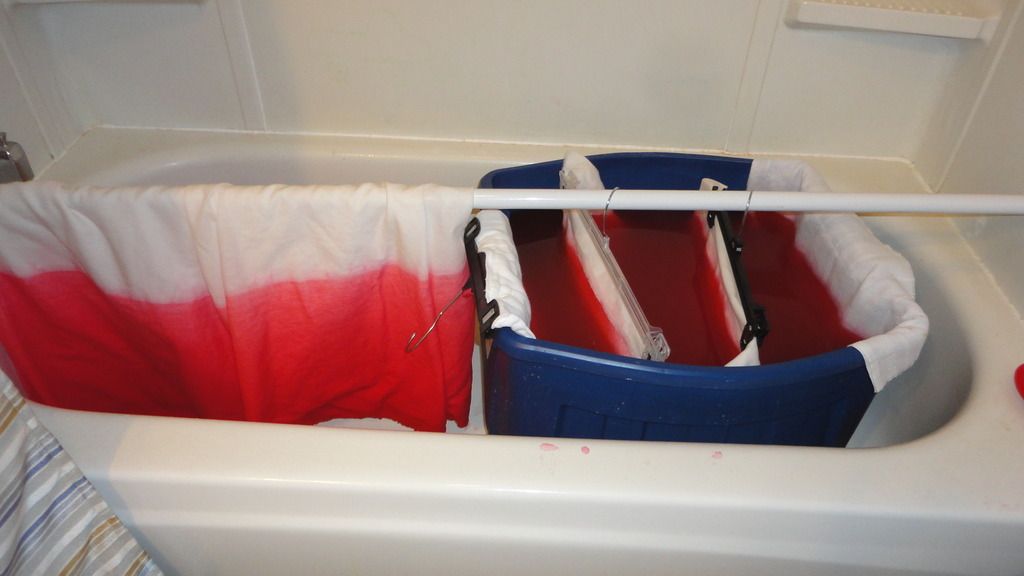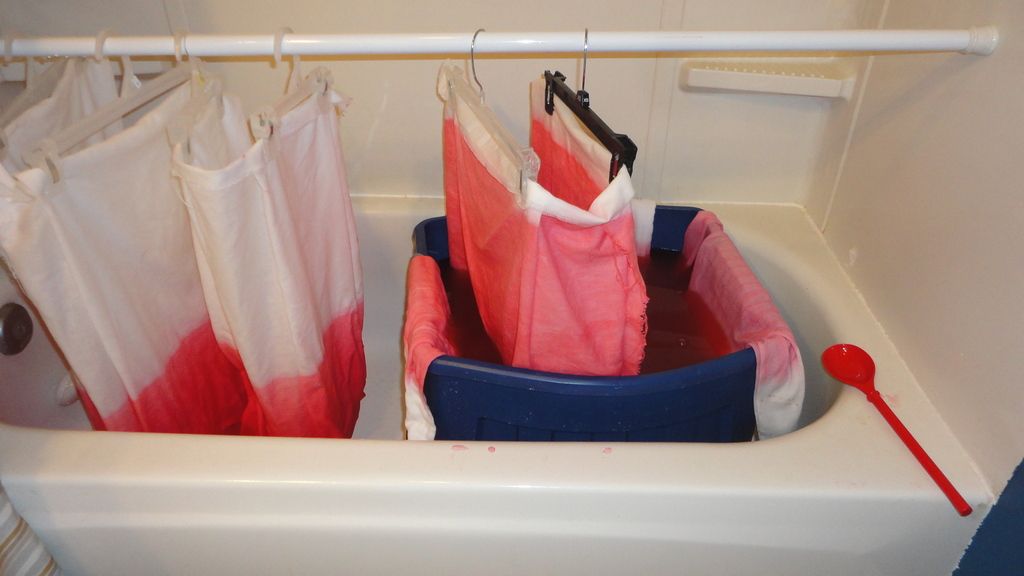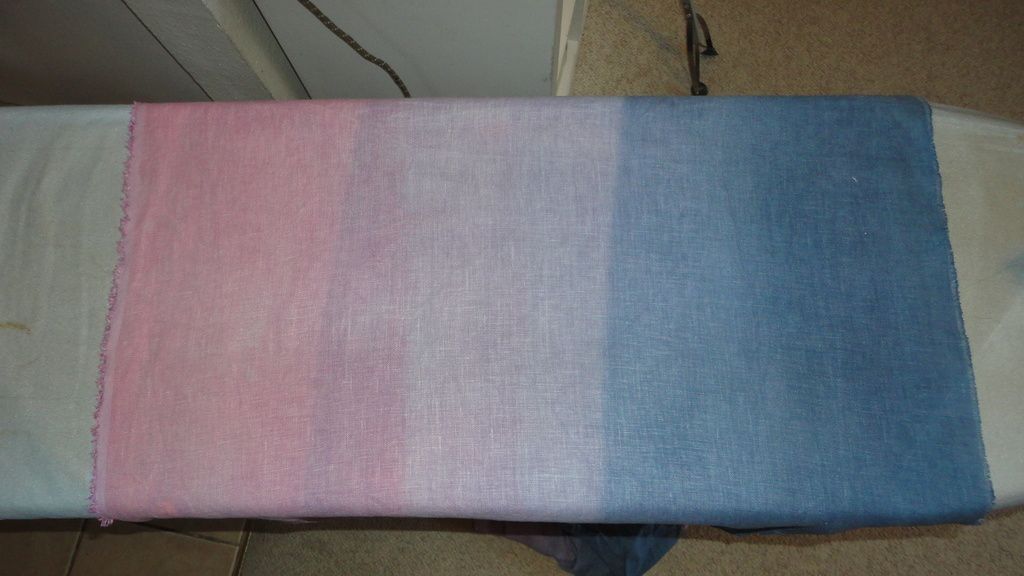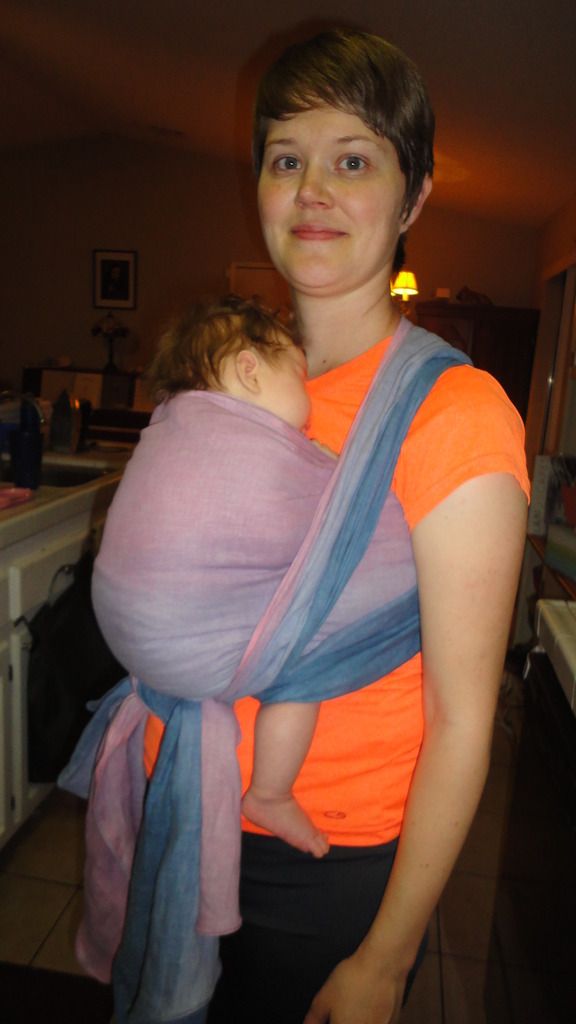Do you love woven wraps? Have you seen the gorgeous handwoven baby wraps and fallen in love? Have you thought, "I wonder if I could weave myself a baby wrap?" You can! But there is quite a bit you have to learn first. Or, are you interested in handwovens but wonder why the are so expensive? Time, skill, and tons of work! Read on and it will make more sense.
I am a newer weaver. I am currently working on my 5th weaving project, my 3rd baby wrap. I am not a pro, but have learned a ton over the last year and wanted to share, hopefully helping someone else.
I've been Babywearing for 3 years and love snuggling my babies. I have also found a love for designing and creating woven fabric. There is something sweet about snuggling my baby in something I created for us.
So...here's how to weave a baby wrap. Steps with pictures including rough time estimates. The steps will be general, I'm not teaching how to weave, just the process of weaving a baby wrap. I'll list some great resources for learning how to weave.
First off...what do you need?
-Weaving Loom- I bought a beautiful loom off Craigslist that came with yarn and all the accessories I could wish for. For a 4-shaft used loom common prices in my area range from $300 to $500. For more than 4-shafts, prices are from $1000 on up. In looking for a loom you want a floor loom that has at least a 32 inch weaving width (not the width of the loom, but the width of the area where you can weave). I've seen people ask about using Rigid Heddle looms, and from what I've read they aren't good for weaving wraps. A floor loom works well, just make sure it is wide enough. It's also a good idea to try a loom out before buying it, looms aren't one size fits all, and it's important to make sure you are comfortable while using it.
-Weaving accessories-
-Reed #10 or # 12 are commonly used for wraps, though other reeds can be used.
-Heddles, you'll need to have enough heddles to make a wrap, depending on the number of ends per inch(epi) you use generally between 700 to 900 heddles.
-Shuttle, a boat shuttle works great, though I'm sure you could use other kinds.
-Reed hook/heddle threader.
-Warping board or mill, some people make their own, or use other things for measuring yarn.
-Bobbins and bobbin winder, some people use other things than a standard bobbin winder.
-Packing- thick paper or sticks that are wider than your warp and will be packed in between the layers of warp on your back beam. I use old city plans (my husband is an engineer), other weavers use packing paper, or screens.
-Yarn- Common fibers used in wraps are: cotton, cottolin, Tencel®, wool, silk, and hemp. There are many other varieties, but those are most common. Common cotton yarn weights for weaving wraps range from 5/2 to 16/2. The most common yarn used and what most people start with is 8/2 or 10/2 cotton for warp and weft. So what do those numbers mean...the first number is related to the weight of the yarn, and the second number is the number of plys/single strands twisted together (some countries have these numbers switched, though usually this is how they appear). The lower the first number the heavier the strand of yarn, the higher the first number the lighter the strand of yarn. Generally speaking, lower numbers will result in a thicker wrap, higher numbers in a thinner wrap, though some of this also depends on weave structure and other factors. If you are using older yarn for your warp make sure to check it first to be sure it won't easily break. Check it by holding a length in your hands and tugging in opposite directions. If it breaks really easily it probably won't be good for warp.
Places from which to buy yarn:
There are many different places to buy yarn. Some that have been recommended are the following:
http://www.handweaver.us/georgia_yarn_company.htm
http://www.lonestarloomroom.com/
http://www.yarnbarn-ks.com/
http://www.lonestarloomroom.com/
http://www.yarnbarn-ks.com/
-Time!😀 Lots and lots of time.
Learn To Weave
-If weaving classes are available in your area, awesome, take them!
-If weaving classes aren't available in your area, there are great options on the Internet.
Craftsy has an awesome Floor Loom Weaving class that goes through the whole process of weaving.
Here's the class: http://www.craftsy.com/class/floor-loom-weaving/119?_ct=sbqii-sqjuweho-dum&_ctp=1&rceId=1467955341232~fkrzjuzz
It often goes on sale for $20. This craftsy class is how I learned to weave. I really like how you can go back and watch it whenever you want and skip to the parts you need a refresher on.
Elizabeth Wagner also has a set of videos on YouTube that go through the weaving process.
Here's the link to her videos: https://www.youtube.com/c/elizziewag/videos
-Other awesome resources:
There are weaving Facebook groups that I love with so many kind weavers willing to answer questions and give help.
There are weaving Facebook groups that I love with so many kind weavers willing to answer questions and give help.
Warped Wrappers (Baby wrap weaver group)- https://www.facebook.com/groups/warpedwrappers/
4-Shaft Weaving- https://www.facebook.com/groups/4shaftweaving/
Babywearing Weavers- https://www.facebook.com/groups/543972878967059/
Learning to Weave by Deborah Chandler is a book that many recommend for learning to weave. Check your local library for it, or you can buy it online.
Step 1: Planning
-Design- Colors and Pattern.
Weaving structure- (the pattern) there are lots of drafts that work great for baby wraps. Easiest ones to start out with are plain weave, or a twill. There are lots of drafts to look at handweaving.net. There are also great books, I've used A Handweaver's Pattern Book by Marguerite Davison a lot. Different weaves bring about different wrapping qualities. Some are more textured, some more smooth, some more dense, others airier. Research to figure out what might work with your desired outcome. Drafts that work best for wraps are those that don't have super long floats. I try to not go over a length of 3 on my floats. Some weavers are fine with larger floats, but 3 is a good number around which to stay. Whether a certain size of float will work is also dependent on the weight of yarn you are using as well as structure.
-There are many different things you can do with the color, which is the great part about weaving your own wrap, you can organize the colors however you want! Some babywearers like having the two edges different colors because it makes it easier to find the right rail (edge) when wrapping. It does help to do a wrapping of possible color mixtures to get an idea of how they might look together. Here's my wrapping.
-Decide on sett, width and length- E-weaving has a great tool for finding a good starting point for sett (how many warp ends per inch) here http://e-weaving.com/Ashenhurst.html. Setts vary in wrap weaving depending on the yarn used, the weaving structure used, and the density you want. Some common setts for 8/2 cotton yarn are 20 epi for plain weave, and 24 epi for twill. The best thing to do is to find a good starting sett, then weave a sample piece to determine if that density is what you want, then adjust from there. Common width for a wrap in between 25 to 30 inches finished (so wider in the reed). The length for your wrap depends on what size wrap you want. Add on extra length for sampling, and loom waste when calculating how long your warp will be, and how much yarn you will need. Make sure you have the right amount of yarn for your project. E-weaving has a great calculator for calculating the amount of yarn you will need: http://e-weaving.com/MoALive.html .
Here are some of my planning calculations:
-I chose to do the warp in 8/2 cotton in a 4 color grad yellow to pink to blue to peach. Mathematically I figured out what number of each color would make for an equal grad. The pattern I chose was Goose Eye from Davidson's book page 22. My warp ended up calculating to 31.5 inches in the reed with a 24 epi totaling 756 ends total.
Time I spent planning- a lot!!! I didn't track this time because I spent time planning while I did other things, like while doing the dishes, while nursing, etc. Depending on what you want to do with your design, it can take a little to a lot of time.
Step 2: Winding your Warp
-Wind your warp- This is where you measure your yarn to all be the same length, then put it into chains to later be put onto your loom. A good length for a starting single piece is about 5-6 yards.
I wanted to get a wrap, a ring sling and a baby blanket off of this warp so I wound my warp 10 yards long.
Time spent winding my 756 ends of 10 yard warp- 8 hours. Some weavers wind faster. Some ways to wind faster are to wind more than one end (strand) at a time, or using a warping mill.
I dress my loom Back to Front, so if you dress yours Front to back the next couple of steps will be in a different order.
Step 3: Beaming
-Spread and beam your warp. This is where you lay out your yarn in order and spread it in the raddle then beam (wind) it onto the back beam of your loom. I used the Simple Tension Device found here: http://joyofweaving.com/articles/loom-hack-simple-tension-device to help me beam my warp. It makes beaming much easier. My husband also helped put the thick paper for packing in between the layers of warp, and turn the beam while I kept my chains going smoothly in front of the loom, which made things go faster.
Time spent winding on- 3 Hours
Step 4: Threading
-Threading the Heddles- This is where you thread each end of yarn through one heddle. Depending on your threading pattern this can be easy, or complicated, and the time will vary.
Time spent Threading- 4.5 hours
Step 5: Sleying the Reed
-This is where you pull a specific number of warp ends through each dent (opening slot) of your reed. The number of ends you pull through each reed slot depends on your epi (ends per inch) and the reed number you are using. I am using a #12 reed which means that there are 12 dents (openings) per inch on the reed. My epi that I had dcided on was 24 epi, so I threaded 2 ends through each dent to get 24 epi. There is an awesome pdf in the 4-Shaft facebook group files called Reed Substituttion Chart that helps in figuring out how many ends to put through each dent.
Time spent sleying the reed- 3 hours
Step 6: Tying On
-This is where you attach your yarn to your front apron rod. There are a couple of different methods that can be used to tie on. I just tied my bouts to the front apron rod. After getting them all tied on you have to make sure that the tension is the same on all the ends. For me this means a lot of tightening and checking and tightening, and checking.
Time spent tying on- 1.5 hours
Step 7: Weaving
-This includes weft sampling, and structure sampling, then just weaving and weaving and weaving. This also includes winding bobbins, advancing my warp, and fixing problems that arise. My first piece was 4 meters long.
Time spent weaving- 16 hours
I wove at about 12 to 15 inches per hour. When I surveyed a group of weavers about how fast they wove the answers ranged from 12 inches per hour to 36 inches per hour depending on weaving experience and how complicated their pattern was.
Step 8: Finishing
-This includes cutting off, mending, stay stitching, wet finishing, hard pressing, and hemming.
If you are looking to sell your wraps it is important that you know and follow the regulations for selling woven baby wraps. Regulations currently apply to labeling and making sure you send a registration card along with the wrap. More information about the regulations can be found online and in the Warped Wrappers files.
Time spent finishing- 4 hours
Hooray, now you can wear it!!!!!
My wrap ended up about 4 yards (3.7 meters) long and 27 inches wide. I love it!
Total time put into weaving this wrap- 40 hours plus design and planning time.
There was some extra time put in because I did a longer warp so it took me more time to wind and beam my warp, but if we just call it 40 hours, that means that I spent about 10 hours per yard of fabric. Of course weavers that have more experience than I do are more efficient and may not take as long. But still, now you know why they cost so much, lots of time and work. I also grad dyed all of my weft yarn, which is so much fun, but also takes a lot of time (I didn't include the dyeing time in my calculations).
I love weaving, and I love these beautiful baby wraps! I'm so grateful to have been led to weaving through babywearing.
I hope this information helps give a good overview of weaving a baby wrap.

































